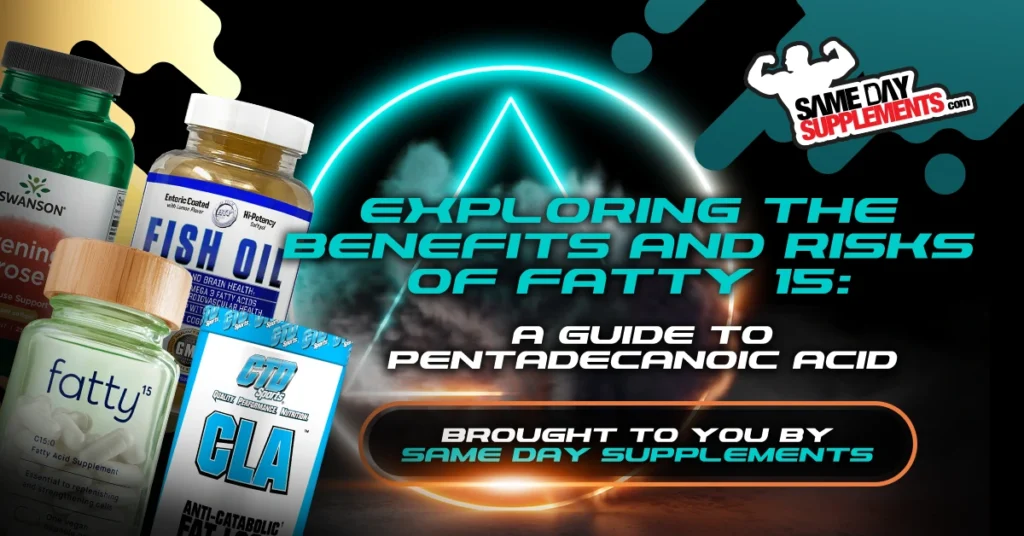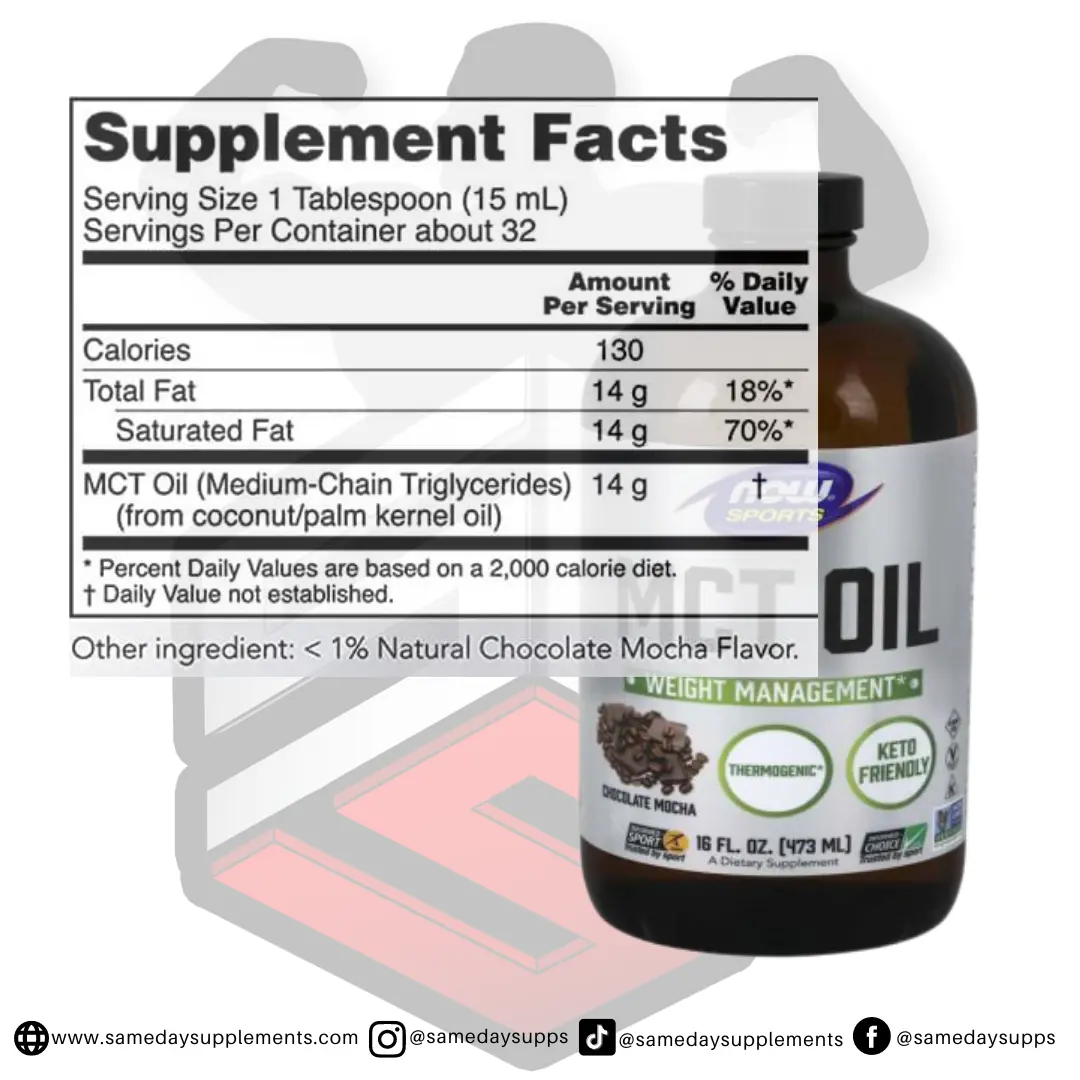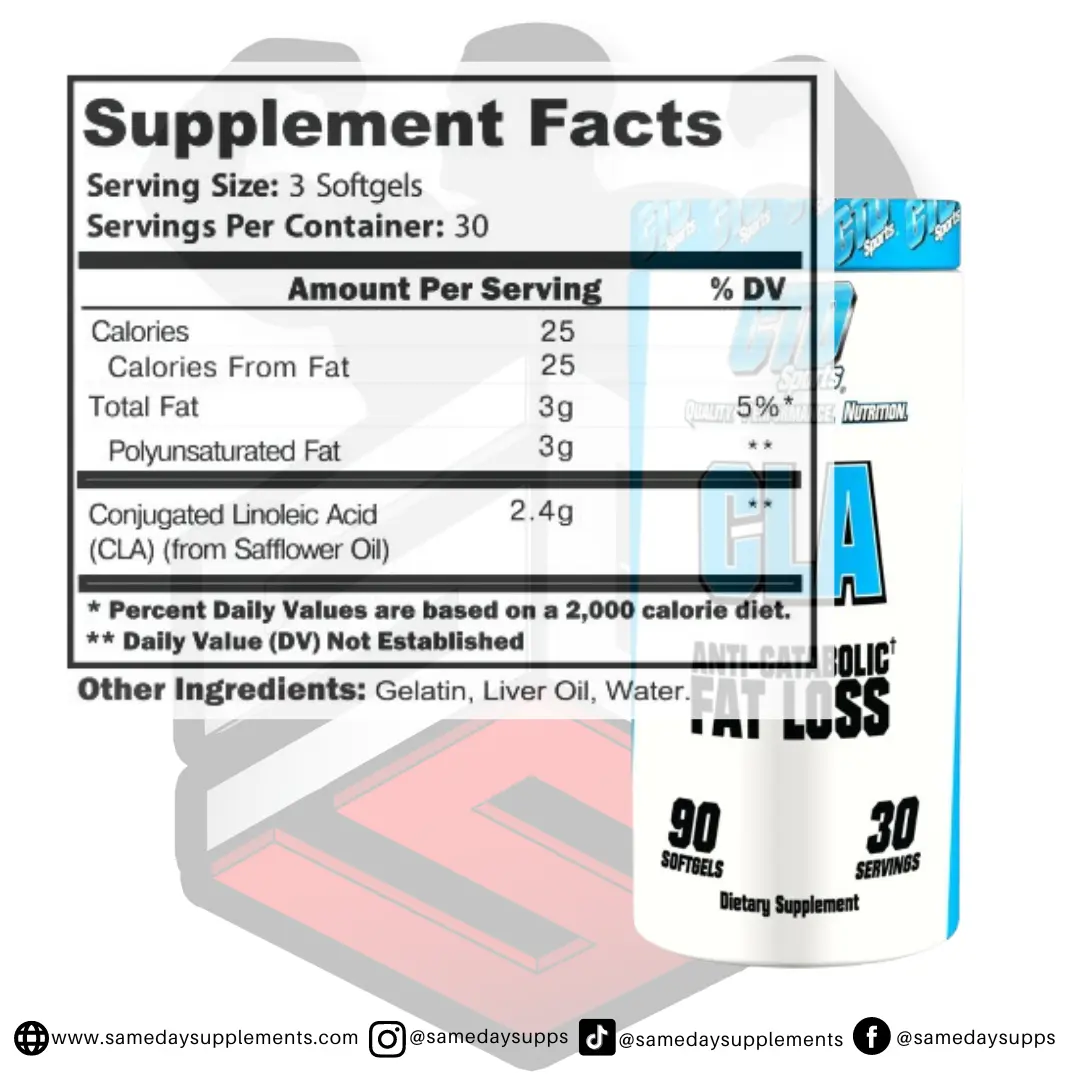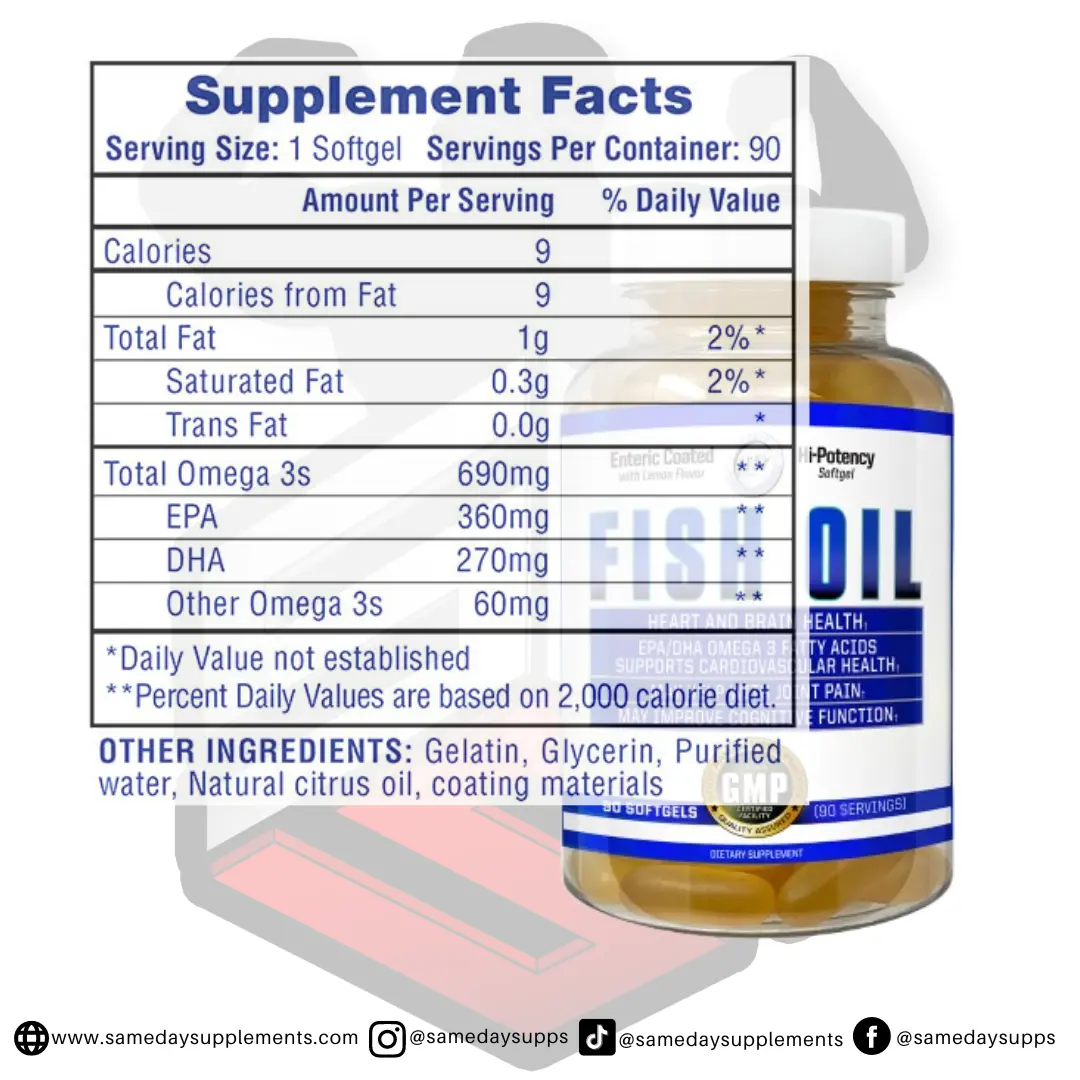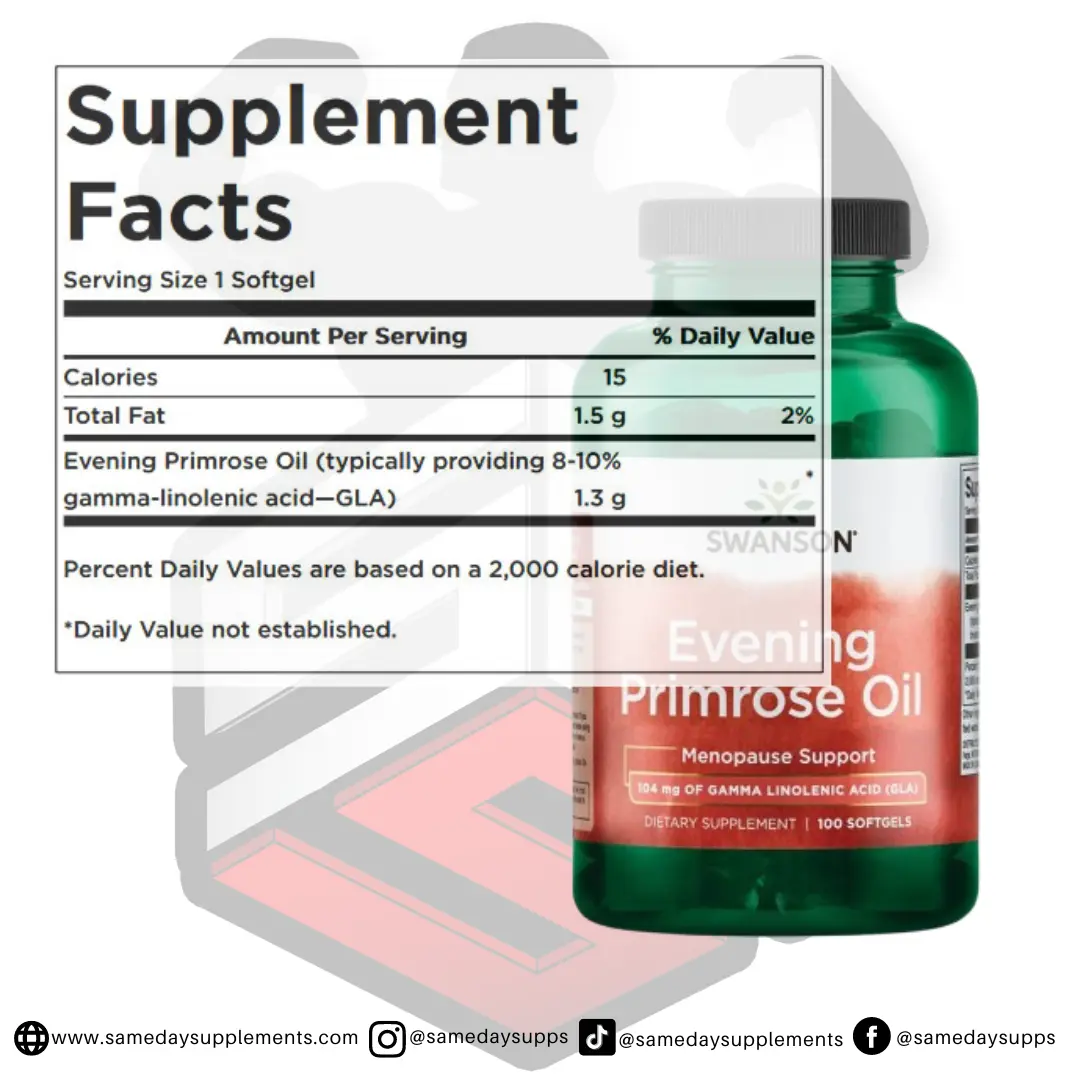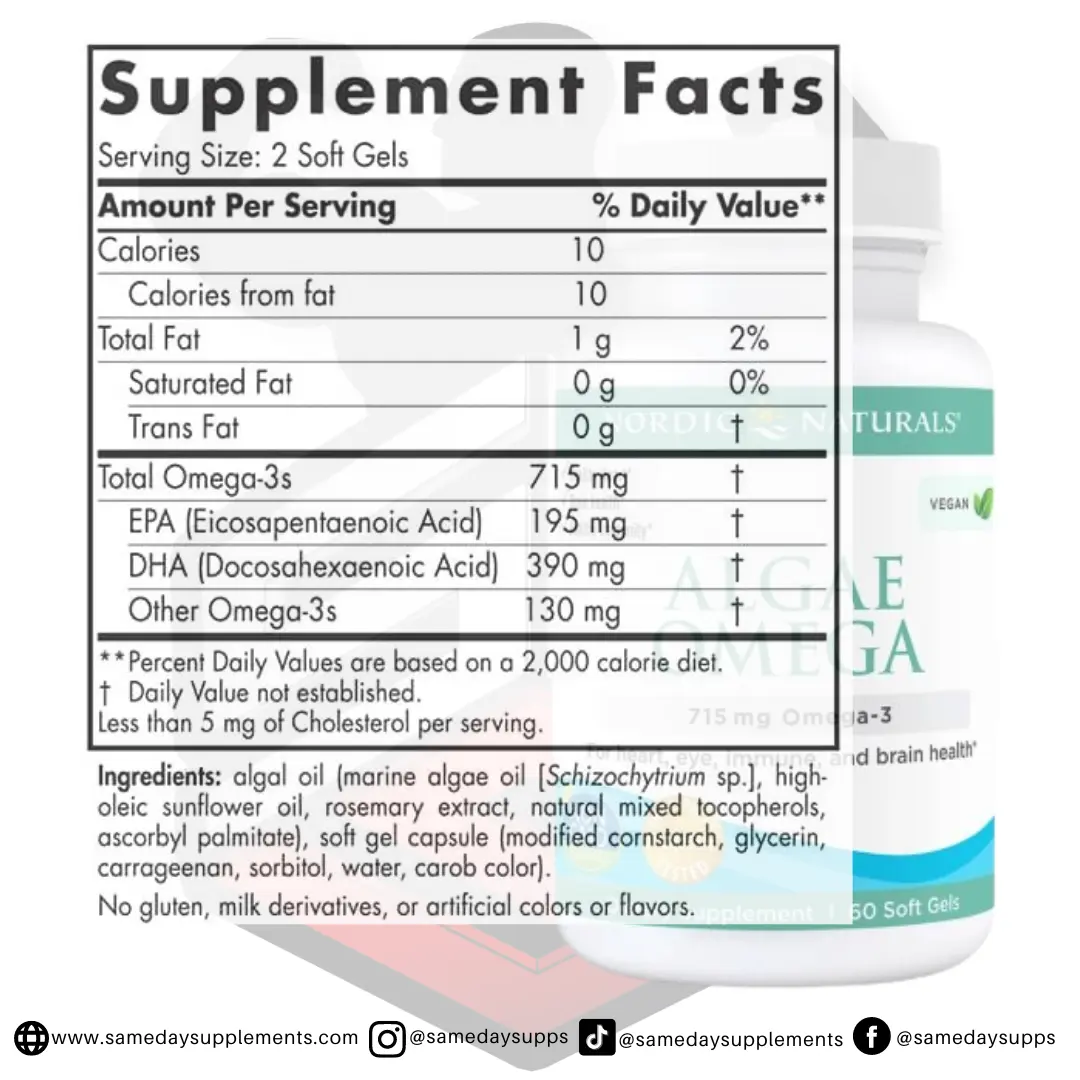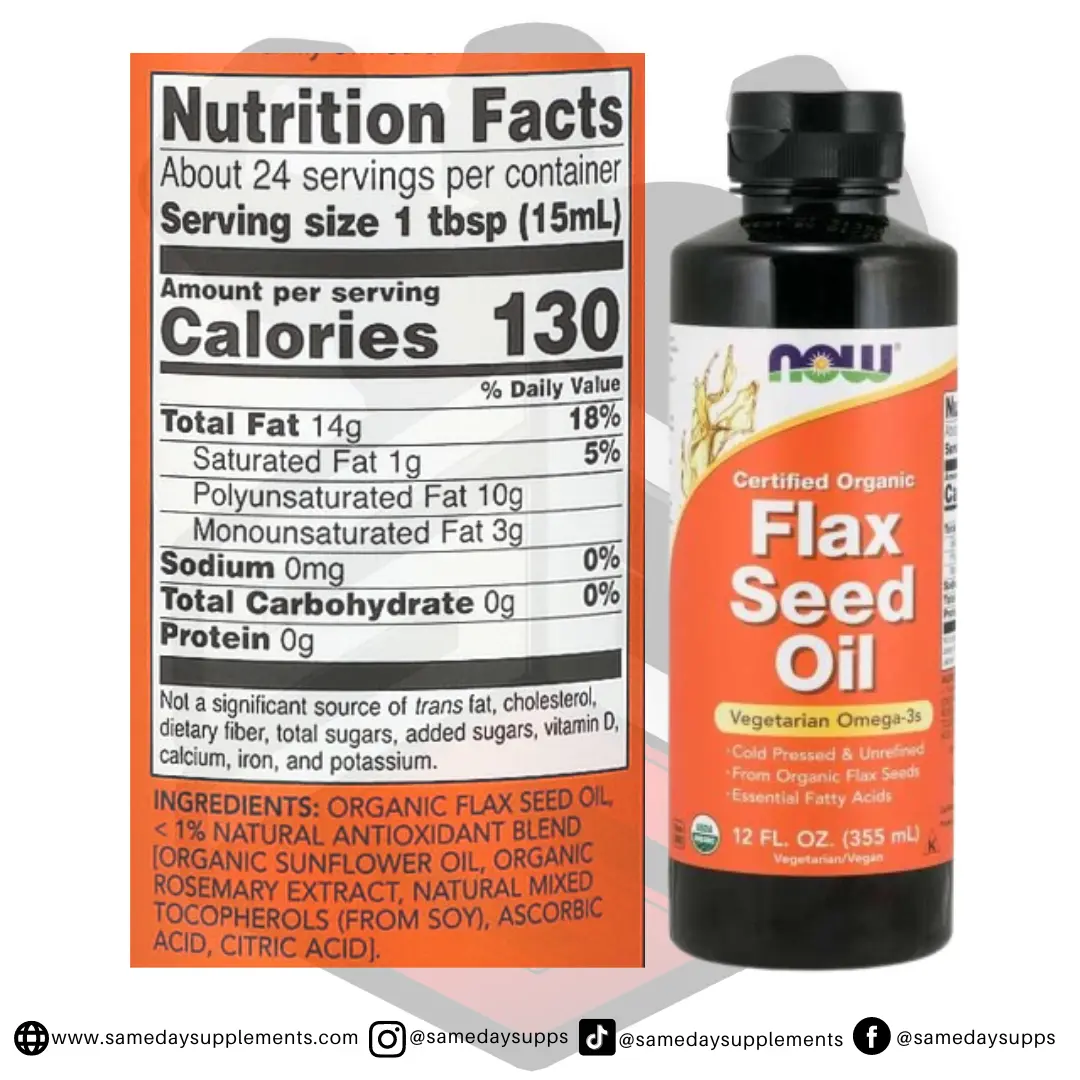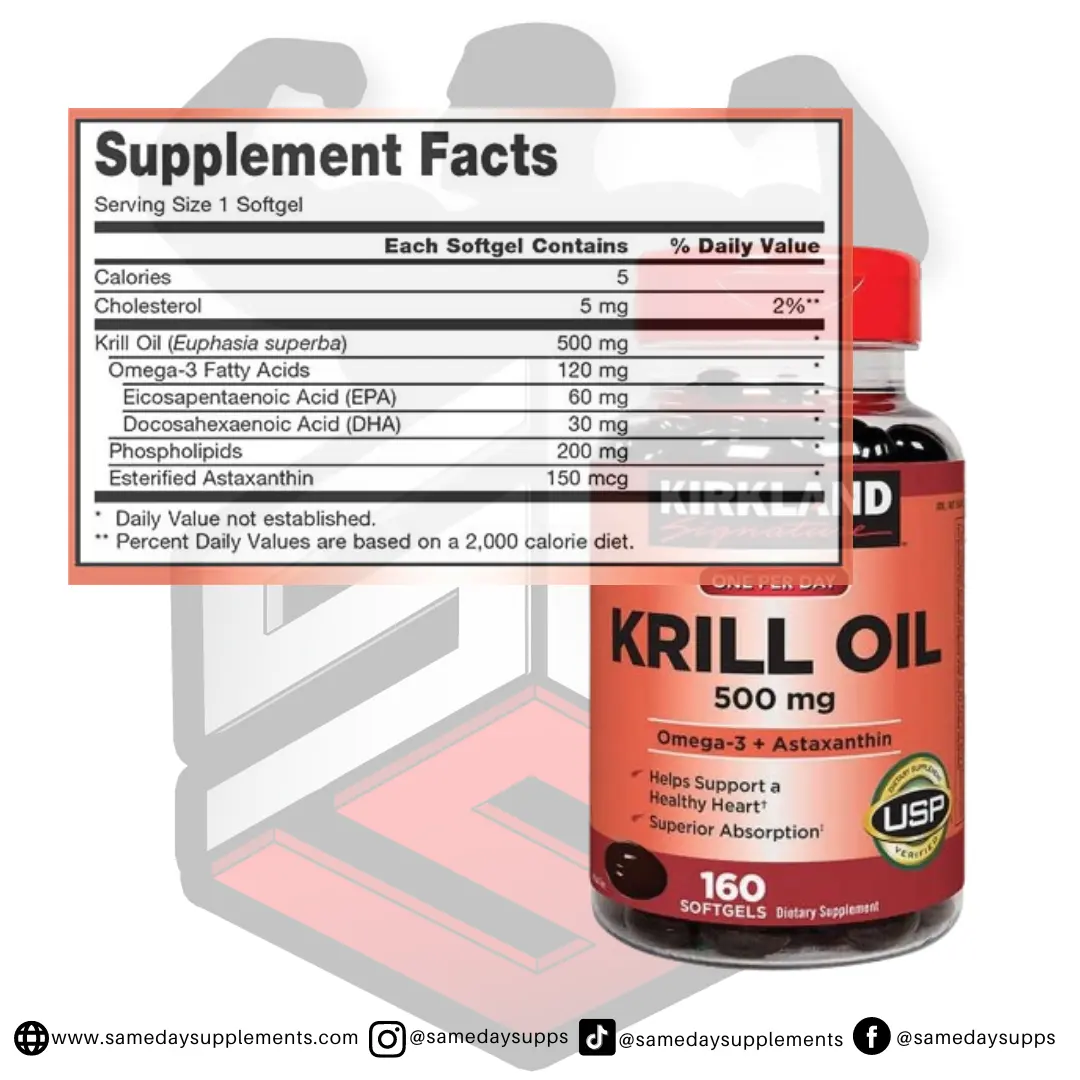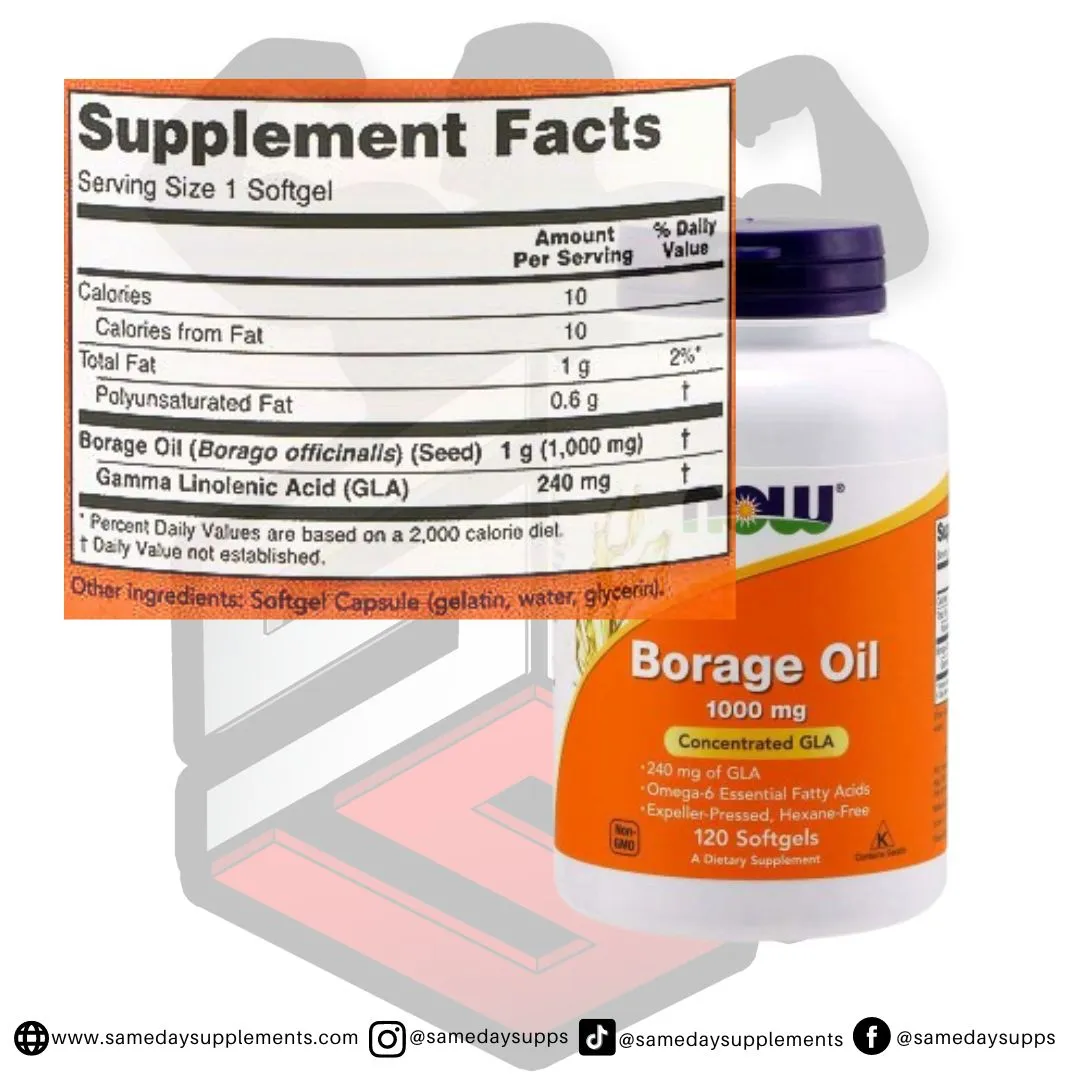Exploring the Benefits and Risks of Fatty 15: A Guide to Pentadecanoic Acid
What is Fatty15 | The Science Behind C15:0 | Benefits | Potential Side Effects of Fatty15 | C15:0 Alternatives | What Should You Try | Wrapping Up | Warnings And Side Effects | Disclaimer
Fatty acids are essential components of our cells, playing crucial roles in energy metabolism, cell signaling, and overall health. While most people are familiar with omega-3 and omega-6 fatty acids, there’s growing interest in a lesser-known fatty acid called Fatty 15, or pentadecanoic acid. In this blog post, we’ll delve into the science behind Fatty 15, explore its potential benefits, and discuss any associated risks.
![]()
What is Fatty15?
Fatty15 is a dietary supplement containing pentadecanoic acid (C15:0), an odd-chain saturated fatty acid that is naturally found in trace amounts in full-fat dairy, some types of fish, and plants like seaweed. While traditionally overlooked, recent research suggests that C15:0 plays a critical role in cellular health, immune function, and metabolism, setting it apart from other fatty acids. (1,2,3)
![]()
The Science Behind C15:0:
C15:0 stands out due to its unique effects on cellular and metabolic functions, acting in ways other fatty acids do not.
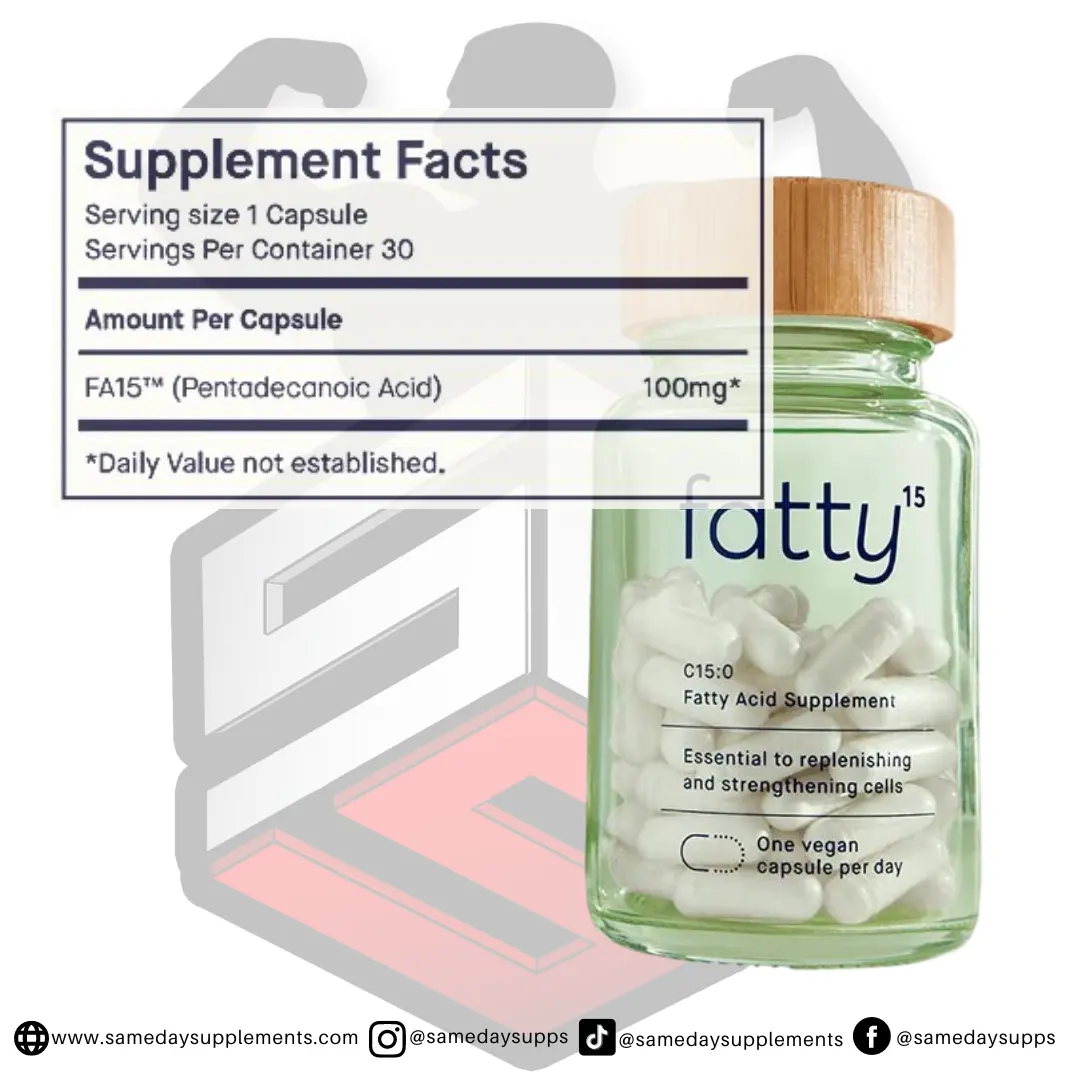
Let’s break down how this works:
How Does C15:0 Work?
- Cellular Level:
C15:0 integrates into cell membranes, enhancing their structural integrity. It helps fortify the membrane against stress, reduces cell membrane fragility, and promotes overall cellular resilience. This structural support can protect cells from damage, which is particularly valuable as we age and our cells become more susceptible to wear and tear. (1,2,3,4)
- Metabolic Regulation:
At the metabolic level, C15:0 plays a role in balancing blood sugar and supporting healthy metabolism. Research suggests it improves insulin sensitivity, which helps the body better manage glucose and may reduce the risk of metabolic disorders like type 2 diabetes. Additionally, C15:0 has been linked to increased mitochondrial function, supporting efficient cell energy production. (1,2,3,4)
- Anti-Inflammatory Properties:
C15:0’s anti-inflammatory effects stem from its ability to reduce the production of pro-inflammatory molecules. By dampening inflammation, C15:0 helps protect the body from chronic inflammatory conditions, such as heart disease, arthritis, and other age-related illnesses. This anti-inflammatory action is one of the key reasons C15:0 is being studied as a potential longevity-promoting nutrient. (1,2,3,4)
- Longevity and Anti-Aging:
C15:0 activates longevity pathways, such as AMPK, a protein that regulates energy balance, and mTOR, which plays a critical role in cell growth and metabolism. Activation of these pathways is associated with improved healthspan, potentially slowing down age-related decline and enhancing overall vitality. (1,2,3,4,5)
The Research Behind C15:0:
Scientific studies are increasingly highlighting C15:0 as a protective fatty acid. Notably, C15:0 has outperformed other commonly recommended fatty acids, such as omega-3s, in improving overall cellular health and function. Its unique properties have prompted researchers to explore its use as a therapeutic agent for chronic conditions and as a daily supplement for enhancing health and well-being. (1,2,3,4)
![]()
Benefits of C15:0
Although more research is needed to fully validate C15:0’s benefits, initial findings are promising. Here are some of the potential advantages of incorporating Fatty15 into your routine:
1. Cardiovascular Support:
Fatty15 may help promote heart health by supporting balanced cholesterol levels and reducing inflammation, which are critical factors in cardiovascular health. Preliminary studies suggest that C15:0 can help stabilize blood vessel function and may positively impact blood pressure regulation. (1,2,3,4,5)
2. Enhanced Liver Function:
Fatty 15 C15:0’s anti-inflammatory properties also extend to liver health. By reducing inflammation in the liver, it may improve liver function and lower the risk of fatty liver disease. Additionally, C15:0’s role in metabolic regulation helps support healthy liver enzyme levels, which are vital for efficient fat metabolism. (1,2,3,4,5)
3. Immune System Modulation:
C15:0’s effects on cellular stability and inflammation can translate into enhanced immune function. By modulating inflammatory responses, C15:0 helps the immune system function optimally without becoming overactive, reducing the risk of chronic inflammation-related immune conditions. (1,2,3,4,5)
4. Overall Well-being and Vitality:
Beyond specific organ support, C15:0 may contribute to a general sense of well-being. Its broad effects on cellular health, metabolism, and inflammation could support everything from cognitive function to joint health, making it a potentially valuable addition to a balanced wellness routine. (1,2,3,4,5)
![]()
Potential Side Effects of Fatty15:
As with any dietary supplement or food, excessive consumption of Fatty 15 could potentially have negative effects. However, there is currently limited data on the safety of Fatty 15. It’s generally considered safe when consumed in moderate amounts, but individuals with specific health conditions should consult with a healthcare professional before incorporating it into their diet.
- Gastrointestinal Discomfort: Some people may experience mild gastrointestinal symptoms, such as bloating, gas, or stomach discomfort, especially when starting out. These effects are usually temporary and can often be managed by starting with a lower dose and gradually increasing it.†
- Allergic Reactions: Although rare, allergic reactions are possible with any supplement. Symptoms such as rash, itching, or swelling should prompt discontinuation of the supplement and consultation with a healthcare provider.†
- Interaction with Medications: If you are taking medications, particularly those for managing blood sugar, cholesterol, or blood pressure, it’s wise to consult with a healthcare provider before starting Fatty15 to ensure there are no interactions.†
![]()
C15:0 Alternatives:
While Fatty 15 C15:0 offers a unique profile of benefits, other fatty acid supplements provide overlapping advantages and are widely used for health and wellness. Let’s explore additional alternatives to Fatty15 and see how they stack up.
1. Medium-Chain Triglycerides (MCTs)
- Structure: MCTs are fatty acids found in coconut oil, palm oil, and dairy products. They are rapidly absorbed and converted into energy by the liver, bypassing typical digestive processes. (6)
- Benefits: MCTs are known for quick energy production, appetite control, enhanced cognitive function, and potential weight management benefits. They are often used in ketogenic and low-carb diets. (7,8,9)
Fatty15 vs. MCT Oil: Key Differences:
- Metabolic Effects: Fatty15 is known for its anti-inflammatory, antifibrotic, and cardiometabolic health benefits, targeting pathways associated with longevity and aging. In contrast, MCT Oil primarily provides quick energy, supports weight loss, and boosts ketone production without the broader cellular benefits of Fatty15.†
- Long-Term Health Benefits: Fatty15 may support long-term health benefits like improved cardiovascular health, insulin sensitivity, and reduced inflammation, potentially influencing overall aging and disease prevention. MCT oil, while excellent for immediate energy and weight management, does not have the same range of cellular and metabolic benefits.†
- Absorption and Usage: MCT oil is rapidly absorbed and used for immediate energy, making it great for pre-workout or as an addition to a morning coffee for a quick mental boost. Fatty15, on the other hand, works on a broader spectrum of health by integrating into cell membranes and influencing metabolic and longevity pathways.†
How To Take NOW MCT Oil Liquid:
The manufacturers recommend shaking well before using. Take 1 tablespoon (15 mL) daily.
Want to read more about MCT oil supplements? Check out our blog Tricaprin, Caprylic Acid, and MCT Oil Supplements: Benefits and Uses
2. Conjugated Linoleic Acid (CLA)
- Structure: CLA is a type of polyunsaturated omega-6 fatty acid found in meat and dairy, particularly from grass-fed sources. (10)
- Benefits: Known for its potential to aid fat loss, improve body composition, reduce inflammation, and enhance immune function. CLA is commonly used by athletes and those looking to lose weight. (11,12,13,14)
Fatty15 vs. CLA: Key Differences:
- Mechanism of Action: Fatty15 works at the cellular level to support membrane stability, reduce inflammation, and improve metabolic health, influencing long-term health and longevity pathways. In contrast, CLA is known for its direct role in fat metabolism, promoting fat loss and muscle retention without significantly affecting cellular health.†
- Health Benefits: Fatty15 offers broad health benefits, including cardiovascular support, enhanced insulin sensitivity, and anti-inflammatory effects that may help reduce the risk of chronic diseases. CLA is specifically known for weight management, improving body composition, and offering anti-inflammatory and antioxidant benefits but lacks the wider metabolic benefits associated with Fatty15.†
- Long-Term Impact: Fatty15 is linked to long-term health improvements, including potential longevity benefits and reduced disease risk. CLA’s primary focus is on fat reduction and muscle maintenance, making it more targeted toward weight management rather than overall health optimization.†
How To Take CTD Sports CLA:
The manufacturers recommend taking 3 softgels 1-2 times daily, preferably with meals.
3. Fish Oil (Omega-3 Fatty Acids)
- Structure: Fish oil contains EPA and DHA, long-chain omega-3 fatty acids essential for heart, brain, and joint health. (15)
- Benefits: Omega-3s are known for their anti-inflammatory properties, cardiovascular support, and role in maintaining cognitive health and mental clarity. (15,16,17)
Fatty15 vs. Fish Oil: Key Differences:
- Fatty Acid Profile: Fish oil is rich in omega-3 fatty acids (EPA and DHA), which are well-known for their cardiovascular and cognitive benefits. Fatty15, on the other hand, is an odd-chain saturated fatty acid with unique metabolic and anti-inflammatory properties.†
- Health Benefits: Fish oil is commonly used for its well-documented benefits on heart health, including lowering triglycerides and reducing inflammation. Fatty15 offers potential benefits related to cellular health and longevity, which are less well-documented but promising.†
- Absorption and Bioavailability: Omega-3s in fish oil are easily absorbed and utilized by the body, whereas Fatty15’s absorption and metabolic processes are less understood but suggestive of unique pathways related to longevity.†
How To Take Hi-Tech Pharmaceuticals Fish Oil:
The manufacturers recommend taking one (1) softgel daily.
4. Evening Primrose Oil
- Structure: Evening primrose oil is rich in gamma-linolenic acid (GLA), an omega-6 fatty acid that the body converts into anti-inflammatory prostaglandins. (18)
- Benefits: Known for its benefits in reducing symptoms of PMS, menopausal discomfort, and skin conditions like eczema, GLA also supports joint health. (19,20,21)
Fatty15 vs. Evening Primrose Oil: Key Differences:
- Primary Components: Evening primrose oil is high in gamma-linolenic acid (GLA), an omega-6 fatty acid known for its skin and hormonal benefits. Fatty15 is a unique odd-chain saturated fatty acid with a different set of potential benefits related to longevity and cellular health.†
- Target Health Areas: Evening primrose oil is used mainly for skin health, hormonal balance, and managing symptoms of conditions like PMS. Fatty15 focuses on cellular health, metabolic processes, and potentially enhancing longevity.†
- Anti-Inflammatory Action: Both supplements have anti-inflammatory properties, but Evening Primrose Oil’s GLA is more targeted towards reducing inflammation related to skin and hormonal conditions, whereas Fatty15’s anti-inflammatory effects are linked to broader health and longevity benefits.†
How To Take Swanson Evening Primrose Oil:
The manufacturers recommend taking one softgel one to two times per day with food and water.
5. Algal Oil (Vegan Omega-3 DHA)
- Structure: Algal oil is a plant-based source of DHA derived from marine algae, making it a sustainable and vegan alternative to fish oil. (22)
- Benefits: It provides heart and brain health benefits similar to fish oil, with added environmental sustainability. (23,24)
Fatty15 vs. Algal Oil: Key Differences:
- Fatty Acid Type: Algal oil is a plant-based source of omega-3 fatty acids (DHA and EPA), making it suitable for vegetarians and those looking to avoid fish-derived products. Fatty15 is an odd-chain saturated fatty acid with distinct metabolic benefits.†
- Health Applications: Algal oil is primarily used for its cardiovascular and cognitive benefits due to its omega-3 content. Fatty15 is being explored for its potential to enhance cellular health, metabolism, and longevity.†
- Sustainability and Source: Algal oil is considered an eco-friendly alternative to fish oil, with a sustainable production process. Fatty15, derived from dairy and fish, has different sourcing and environmental considerations.†
How To Take Nordic Naturals Algae Omega:
The manufacturers recommend two softgels with food or as directed by your healthcare professional or pharmacist.
6. Flaxseed Oil
- Structure: Flaxseed oil contains alpha-linolenic acid (ALA), a plant-based omega-3 fatty acid that the body partially converts into EPA and DHA. (25)
- Benefits: Supports heart health, reduces inflammation, and provides antioxidant benefits. It is a good option for those who prefer plant-based supplements. (26,27)
Fatty15 vs. Flaxseed Oil: Key Differences:
- Fatty Acid Composition: Flaxseed oil is high in alpha-linolenic acid (ALA), an omega-3 fatty acid, whereas Fatty15 is an odd-chain saturated fatty acid with different metabolic effects.†
- Health Benefits: Flaxseed oil is popular for its heart health benefits and its role in supporting healthy skin and reducing inflammation. Unlike Fatty15, which is being studied for its potential to impact cellular health and support longevity.†
- Bioavailability: ALA from flaxseed oil is converted to EPA and DHA in the body, though this conversion is not very efficient. Fatty15 is used directly in cellular functions and metabolism, with unique effects on health that are not fully understood yet.†
How To Take NOW Flax Seed Oil Liquid:
The manufacturers recommend taking 1 tablespoon 1 to 2 times daily, preferably with meals. Suitable in salad dressing oil, sauces, peanut butter, yogurt and protein shakes; it can also be used in place of butter on rice, potatoes or toast.
KEEP REFRIGERATED. In order to retain freshness, keep the bottle tightly closed and refrigerated. For maximum freshness, consume within 6-8 weeks after opening.
7. Krill Oil
- Structure: Krill oil contains omega-3 fatty acids EPA and DHA bound to phospholipids, which enhance their absorption and bioavailability. It also contains astaxanthin, a powerful antioxidant. (28)
- Benefits: Krill oil supports heart health, reduces inflammation, and enhances joint and brain health while providing antioxidant protection. (29,30)
Fatty15 vs. Krill Oil: Key Differences:
- Fatty Acid Content: Krill oil contains omega-3 fatty acids (EPA and DHA) in phospholipid form, which may enhance absorption.†
- Health Focus: Krill oil is popular for its heart health benefits, joint health support, and improving cognitive function. Meanwhile, Fatty15 is unique in its effects on cellular health, longevity, and metabolism.†
- Absorption: The phospholipid form of omega-3s in krill oil may have better absorption in comparison to the triglyceride form found in standard fish oil. Fatty15’s absorption and utilization have been studied less, but they may involve different mechanisms.†
How To Take Kirkland Krill Oil:
The manufacturers recommend taking one (1) softgel daily, preferably with a meal.
8. Borage Oil
- Structure: Borage oil is another rich source of gamma-linolenic acid (GLA), similar to evening primrose oil but often with higher concentrations of GLA. (31)
- Benefits: Supports skin health, hormonal balance, joint function, and inflammation management, particularly in autoimmune conditions. (32)
Fatty15 vs. Borage Oil: Key Differences:
- Fatty Acid Composition: Borage oil is rich in gamma-linolenic acid (GLA), an omega-6 fatty acid, whereas Fatty15 is an odd-chain saturated fatty acid with a unique profile.†
- Primary Benefits: Borage oil’s primary uses are for its anti-inflammatory properties, skin health benefits, and hormonal balance. Meanwhile, Fatty15 may support cellular health and longevity.†
- Research Status: Borage oil has established uses and research, particularly in managing inflammation and skin health. Fatty15 is newer, and ongoing studies are examining its long-term benefits and unique effects on health.†
How To Take NOW Borage Oil:
The manufacturers recommend taking 1 softgel 1 to 2 times daily, preferably with food. Store in a cool, dry place after opening.
![]()
What Should You Try:
When deciding which fatty acid supplement to incorporate, it’s essential to consider your specific health goals and how each option aligns with them. Here’s a quick guide:
- Quick Energy and Cognitive Support: MCTs provide fast energy and are excellent for those on low-carb diets or looking to enhance mental performance.†
- Anti-Inflammatory and Cardiovascular Health: Fish oil or krill oil, with high EPA and DHA content, offer the most potent anti-inflammatory and heart health benefits.†
- Weight Management and Body Composition: CLA and MCTs are great for weight management, with CLA focusing on fat loss and MCTs enhancing metabolism.†
- Hormonal Balance and Skin Health: Evening primrose oil or borage oil, rich in GLA, helps manage hormonal fluctuations and improve skin conditions.†
- Long-Term Cellular Health and Metabolic Regulation: Fatty15, with its unique C15:0 content, supports cellular resilience, metabolic stability, and longevity, making it a standout for overall health enhancement.†
![]()
Wrapping Up!
This concludes our post comparing Fatty 15 C15:0. Thank you for reading! And as always, if there was something that wasn’t clear, another question you might have, or if you have another idea for a blog, Email Us!
Looking for more to read? Check out some of our other blogs!
- Skald Fat Burner Review 2024: Does it Live Up to the Hype?
- Top 8 Supplements for Relieving Muscle Cramps
- Hydroxytyrosol: Guide To How Olive Oil Antioxidants Can Benefit You Today
- Is GABA the Missing Piece to Your Well-being? (Understanding What It Is And Why It Matters Today)
- Supercharge Your Health Today with Methylcobalamin: A Look at Sublingual B12
- Do Hair Loss Supplements Really Work? Exploring the Benefits of Nutrafol®
- Supplement Stacking 101: How to combine different supplements for optimal results
![]()
Warnings And Side Effects:
Consult your healthcare provider before consuming this product. Do not use it if you are pregnant or breastfeeding. Keep out of reach of children.
![]()
Disclaimer:
†Please note the intention of the information provided is for reference only. Furthermore, we are in no way providing medical advice or instruction. Instead, the information provided in this guide/blog utilizes anecdotal information and available studies/reviews. While we aim to maintain and display accurate information, we can’t guarantee it represents the latest product formulation or information. Therefore, please visit the manufacturer’s website if you have any concerns. Also, the information above does not represent our views here at Same Day Supplements. Instead, these are the manufacturers’ and users’ views and information. Additionally, the Food and Drug Administration has not evaluated these statements. Finally, these products aim not to diagnose, treat, cure, or prevent disease or illness.
